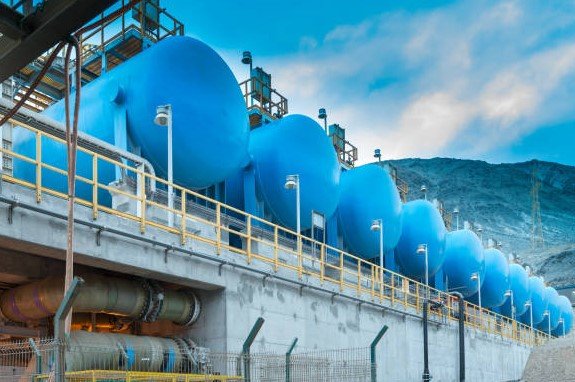Jordan’s government has approved new steps to push forward the Aqaba-Amman Water Desalination and Conveyance Project, known as the National Water Carrier. This move, announced on September 9, 2025, aims to tackle the country’s severe water shortage by building a major desalination plant and pipeline system.
Project Overview and Goals
The National Water Carrier Project stands as Jordan’s biggest infrastructure effort ever. It plans to draw seawater from the Red Sea at Aqaba, desalinate it, and send fresh water over 300 kilometers to Amman and other highland areas.
This initiative will produce about 300 million cubic meters of clean drinking water each year. That amount could serve around four million people and ease the heavy load on Jordan’s overused groundwater and surface water sources.
Jordan faces one of the world’s worst water scarcities, with less than 100 cubic meters of freshwater per person annually. The project uses reverse osmosis technology to remove salt from seawater, creating a reliable supply for homes, farms, and industries.
Officials say it will help recharge depleted aquifers and support long-term water security amid climate change and population growth.

Recent Government Approvals and Progress
On Monday, Prime Minister Jafar Hassan’s cabinet greenlit extra measures to keep the project moving. These include soil tests, land surveys, and steps toward financial closure.
Early work has already started, with technical annexes approved in the first half of 2025. The government reports no major delays so far, keeping the timeline on track.
A key milestone came in January 2025 when Jordan signed a deal with a consortium led by Meridiam and Suez. This public-private partnership sets the stage for construction through shared investment and expertise.
The project has drawn international support. Recent grants include 50 million euros in soft loans and two million euros from Italy in May 2025, plus a 31 million euro grant from the Netherlands in April 2025.
These funds build on earlier financing, like the 2.2 billion dollars secured in 2022. Together, they ensure the project can advance without straining Jordan’s budget.
Technical Details and Infrastructure
The desalination plant in Aqaba will handle massive volumes of seawater. Water will travel through a pipeline crossing tough terrain to reach Amman and nearby towns.
Key features of the project include:
- A capacity of 300 million cubic meters per year, enough to meet a big chunk of national demand.
- Advanced reverse osmosis systems for efficient desalination.
- A 300-kilometer pipeline designed to handle elevation changes and ensure steady flow.
Engineers are focusing on sustainability. The setup will reduce reliance on finite groundwater, which has dropped sharply due to overuse and dry spells.
To show the scale, here’s a quick table of project specs:
| Aspect | Details |
|---|---|
| Annual Water Output | 300 million cubic meters |
| Pipeline Length | Over 300 kilometers |
| Main Technology | Reverse Osmosis |
| Expected Beneficiaries | About 4 million people |
| Total Cost Estimate | Around 2.2 billion dollars (initial financing) |
This infrastructure not only addresses water needs but also boosts economic growth by supporting agriculture and urban development.
Challenges and Broader Impact
Building such a large project brings hurdles. High costs, technical complexities, and environmental concerns top the list. Desalination uses a lot of energy, so planners are exploring renewable sources to keep it green.
Jordan’s water crisis ties into regional issues, like shared rivers and climate shifts. The country has learned from neighbors, such as a recent delegation visit to Morocco in May 2025 to study their desalination successes.
On a positive note, the project could create jobs during construction and operation. It aligns with Jordan’s Economic Modernization Vision, which King Abdullah II has called a national priority.
Similar efforts elsewhere, like desalination plants in Saudi Arabia and Israel, show how such projects can transform water-scarce areas. Jordan aims to follow suit while adapting to its unique landscape.
Future Outlook and Sustainability
Looking ahead, the National Water Carrier could start delivering water by the late 2020s if progress continues. Full operation would mark a turning point for Jordan’s water management.
Experts predict it will improve drinking water quality, which already stands at 99 percent in monitored areas as of mid-2025. It also supports goals to cut water losses and enhance efficiency in critical sectors.
In a region hit hard by droughts, this project offers hope. It ties into global talks on climate adaptation, much like recent webinars on wastewater solutions in fragile contexts held in September 2025.
We encourage readers to share this article and comment below on how water projects like this could shape the future. Your thoughts help spark important discussions.
